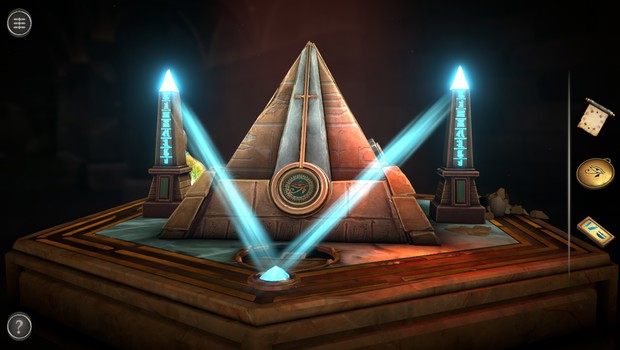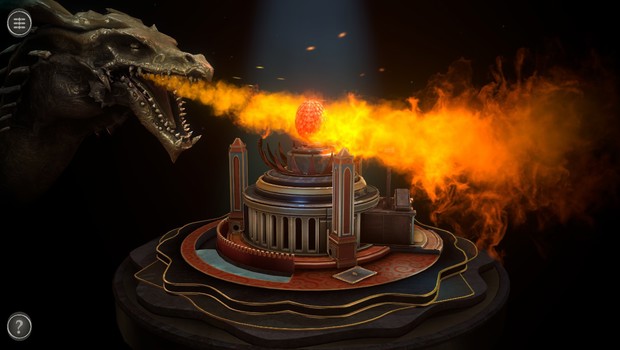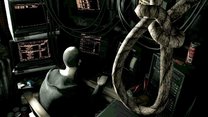Boxes: Lost Fragments review

- 0 Comments
Plenty of entertaining, ornate surprises wrapped up in Big Loop’s latest hands-on puzzle adventure
There’s truth in advertising in Big Loop Studios’ aptly titled Boxes: Lost Fragments, the developer’s latest take on the puzzle box formula. Like previous titles in the studio’s repertoire (most notably the Doors series), Boxes focuses on small-scale but intricate puzzle scenarios, a variety of self-contained challenges that the player must manipulate, each containing a hidden artifact needed to advance. While the game is light on story, the satisfaction derived from tinkering with the many switches, levers, gears and gadgets it presents is considerable, as is the level of creativity evidenced by the eponymous boxes, elevating the entire campaign and making it an experience that puzzle fans will find well worth their time.
As a master thief, you’ve been summoned to a mysterious mansion where you’ve been promised your greatest challenge. Upon arriving in the palatial entry hall, it becomes clear that you’ve been selected due to your uncanny ability to circumvent any locks in your path. Your goal in Boxes is to assemble a number of intricate devices, each one located on ascending floors of the mansion. The pieces needed to complete each device are locked away in four puzzle boxes on the same floor, which must be conquered one by one before the floor’s grand puzzle can be tackled. Once completed, each device will yield a token that operates the mansion’s central lift to carry you up to the next level, with the fifth and final floor finally laying bare the mysterious treasure you’ve been summoned to liberate. In all, then, the game presents you with twenty puzzle boxes to chew on, plus a bonus device on each floor needed to ascend, all of which take around five hours to finish.

While the story is obviously not a main pillar here, Boxes does provide a few optional nuggets of narrative along the way, in the form of short written notes scattered about some of its puzzle box stages. These share a tale of an inventor – presumably the master of the mansion you find yourself in – and his greatest triumph, a creation that soon turned out to be his worst nightmare. It’s an extremely light framework, really something more hinted at than an outright story being told, but it does at least color in a little bit of context for when you do finally reach your ultimate destination, giving you something to mull over for a few minutes as the credits roll.
But let’s get to the meat and potatoes of what really should be drawing you to this game: Solving the various puzzle boxes is, to put it succinctly, an awful lot of fun! Each of these wonders of digital engineering is found in its own room, away from all other distractions. Which is perfectly sensible, as each box is so intricately designed that it deserves its own private limelight. As you swipe your way around each box’s four lateral faces (the entire game is presented in first-person 3D and controlled via mouse, using simple clicks and dragging motions), as well as the top, you’ll be able to interact with all manner of switches, buttons, dials, levers and other mechanisms that slowly but surely give way to grant access to the box’s hidden innards.
Before I get into what the game feels like to actually play, special recognition must be paid to its visual design, particularly the gorgeous aesthetics of the boxes themselves. Each one is a visual treat, not only intriguing but exciting to behold on a conceptual level. Every box adheres to some sort of central theme, whether that’s Vegas, Greek mythology, medieval fantasy, Arabian Nights or terrors of the deep. The amount of creativity on display is fantastic, and it makes each new box represent a little water-cooler moment in and of itself. Since most boxes can be completed in anywhere from five to fifteen minutes, the steady clip of new discoveries will have you smiling from beginning to end. Some even feature additional visual flourishes, like a hunting horn lying next to the Norse mythology box, or the pyramid-themed box being located on a surface mimicking the surrounding desert.
As inventive as many of the box designs are, it honestly feels like a skilled craftsman could conceivably replicate working versions of them in real life, and I couldn’t suppress a few giddy moments of imagining these designs actually coming to life – for the most part. A few examples do buck that trend, and while it would be impossible to actually have a dragon’s head emerge from the darkness of the surrounding room and breathe fire to hatch the egg prominently cradled on the box, it sure does make for an amazing touch only possible in this fictional setting. The same could be said for the handful of times you actually get to go inside a box for a puzzle or otherwise become a tiny participant in the box’s world, such as when the camera guides you into a tiny horse-drawn chariot and circles a Greek temple, allowing you to literally ride shotgun to slay a minotaur with a crossbow. Though they do break the rules of physical reality, these moments are too good not to be included in a game.

Above all, Boxes is an extremely tactile experience. The game leaves all actual physical manipulation up to you: if a gear needs rotating, a key turning, a knob twisting, it’s you who will need to perform the desired movement by clicking and dragging your mouse accordingly. Since there are no hotspot indicators in-game, you’ll find yourself trying all sorts of manual interactions as you swipe around the periphery of each box. Clicking on certain sections will zoom you in for a closer look, so the first few moments with each new box typically consist of an orientation period just to see what you can and cannot interact with right away.
By making the player responsible for all interactions, and through the use of great sound design, progression through each box’s secrets is immensely satisfying. Music is next to non-existent, really only present on the title screen, allowing the focus to remain on ambient effects during gameplay. Each lock that audibly disengages, every switch that snicks into place, every gear that begins to whir behind the box’s plating, and each panel that smoothly slides out of the way elicits a tiny dopamine hit, evoking that familiar “just one more” feeling that the best puzzle games make you experience to keep you engaged.
But Boxes is far more than just a pleasant ASMR experience. Over the entirety of its twenty-box campaign, the game brings to the forefront just about every puzzle variant you can reasonably shake a stick at. While each box inexorably includes a few simple, no-challenge locks that only require a dial to be turned or latch to be slid across (you gotta start somewhere, right?), there’s typically a build-up of more rigorous material to scratch your head over as you progress. For a seasoned puzzle aficionado, there’s likely not going to be an inordinate amount of difficulty here, but some of the more enjoyable instances are puzzles where you must first suss out what you’re actually meant to do before finding a way to accomplish said goal. Only two instances got me stuck to the point where I needed numerous attempts to best a challenge (both of the board game variety), and I’m honestly not sure I didn’t finally win each purely because of dumb random luck.
Final Verdict
Boxes: Lost Fragments has a singular focus, and it pretty much puts all of its eggs into that basket-shaped puzzle box in delivering exactly what it promises on the label. While some might prefer a more fleshed-out story or world to explore, those with a penchant for tricky lockboxes or escape room mysteries will find lots to love here, from the clever and crafty box designs to the engaging sensation and satisfying audio cues of pieces literally falling into place as you work your way through scores of locks, dials and other mechanisms. It isn’t always the heftiest of challenges, but this ensures it’s paced well enough to not outstay its welcome and, most importantly, never fails to make you marvel in delight at the next surprise hidden up its sleeve.
Hot take
Big Loop Studios’ pedigree in the puzzle box space shows through in Boxes: Lost Fragments, a brief but fun foray into a world of creativity and sheer imagination.
Pros
- Incredibly creative box designs aplenty
- Puzzles are a joy to work out and solve
- Engaging sound design makes manipulating all the moving parts a continual delight
Cons
- A mostly threadbare story takes a (deliberate) backseat
- Some puzzles, and even boxes, fly by in a jiffy
Pascal played Boxes: Lost Fragments on PC using a review code provided by the game's publisher.











0 Comments
Want to join the discussion? Leave a comment as guest, sign in or register in our forums.
Leave a comment